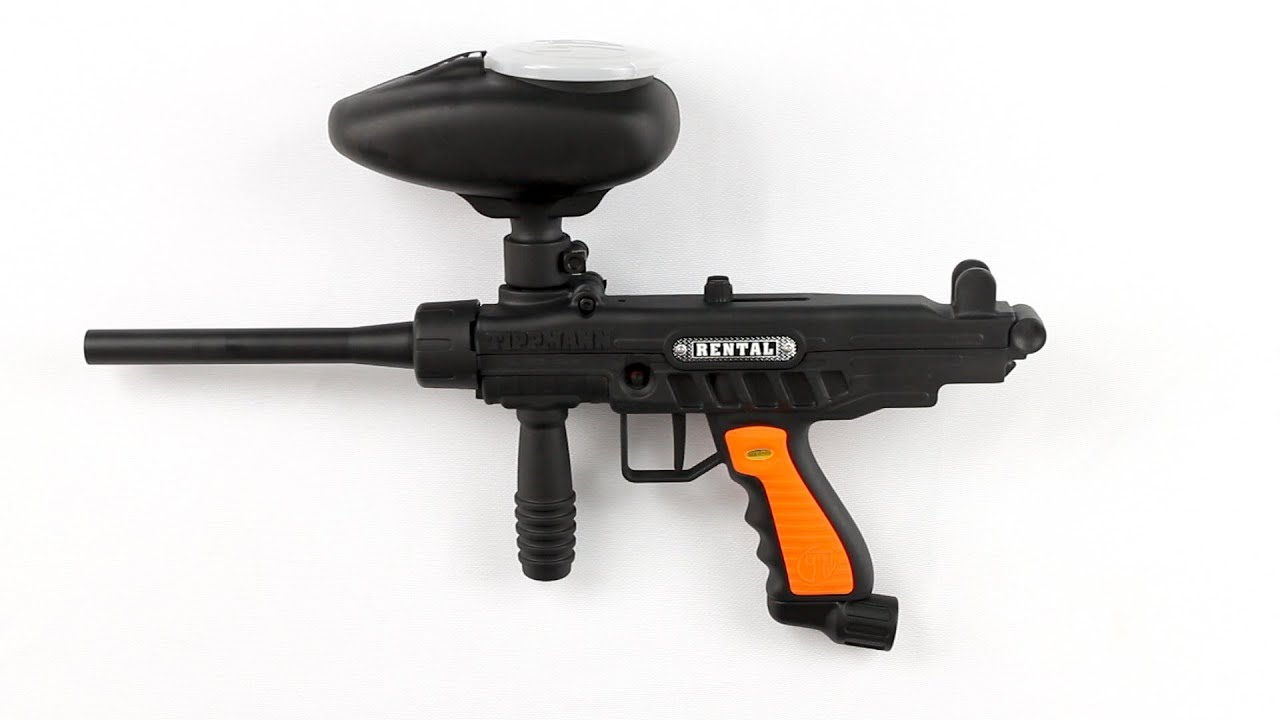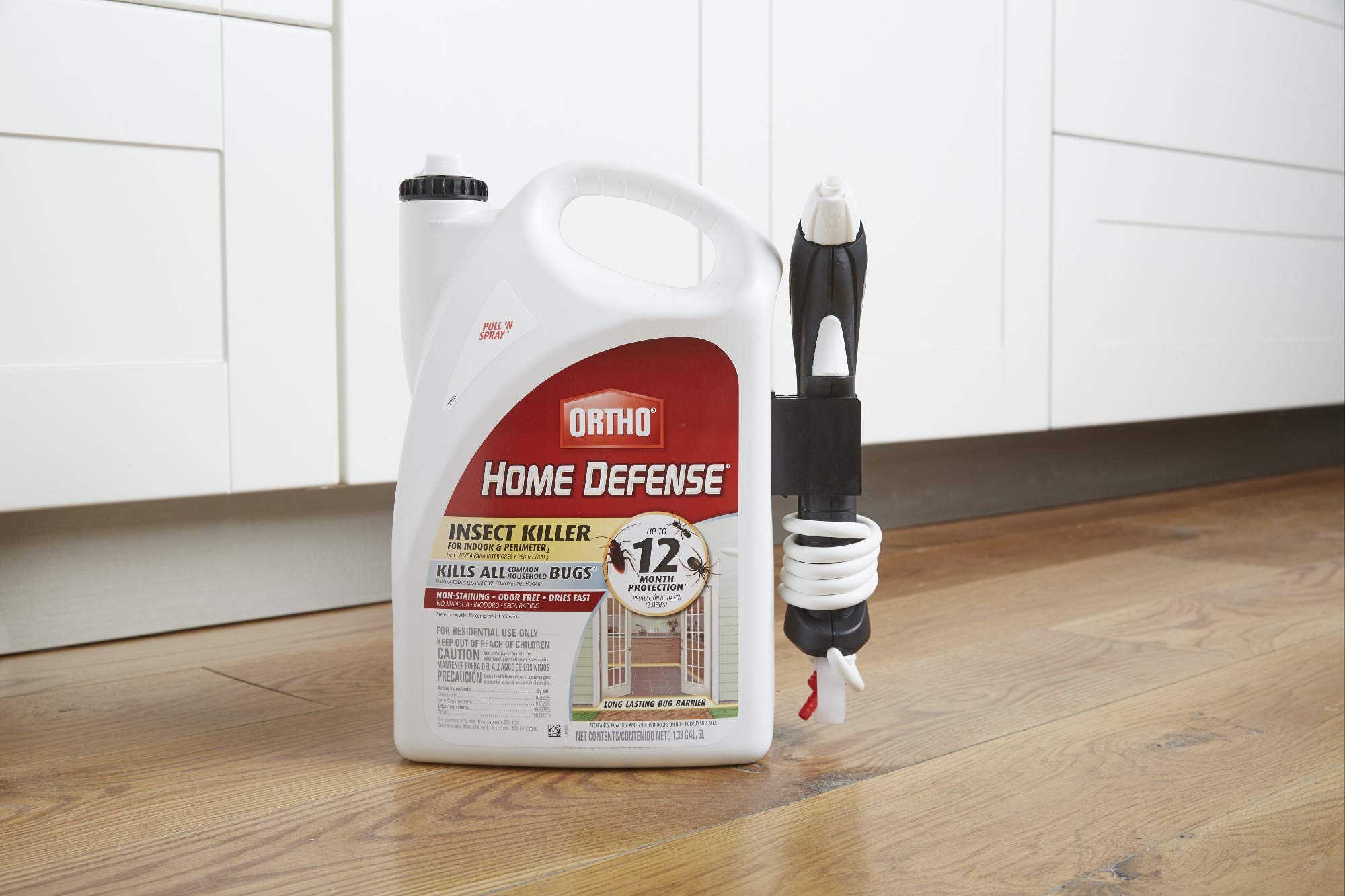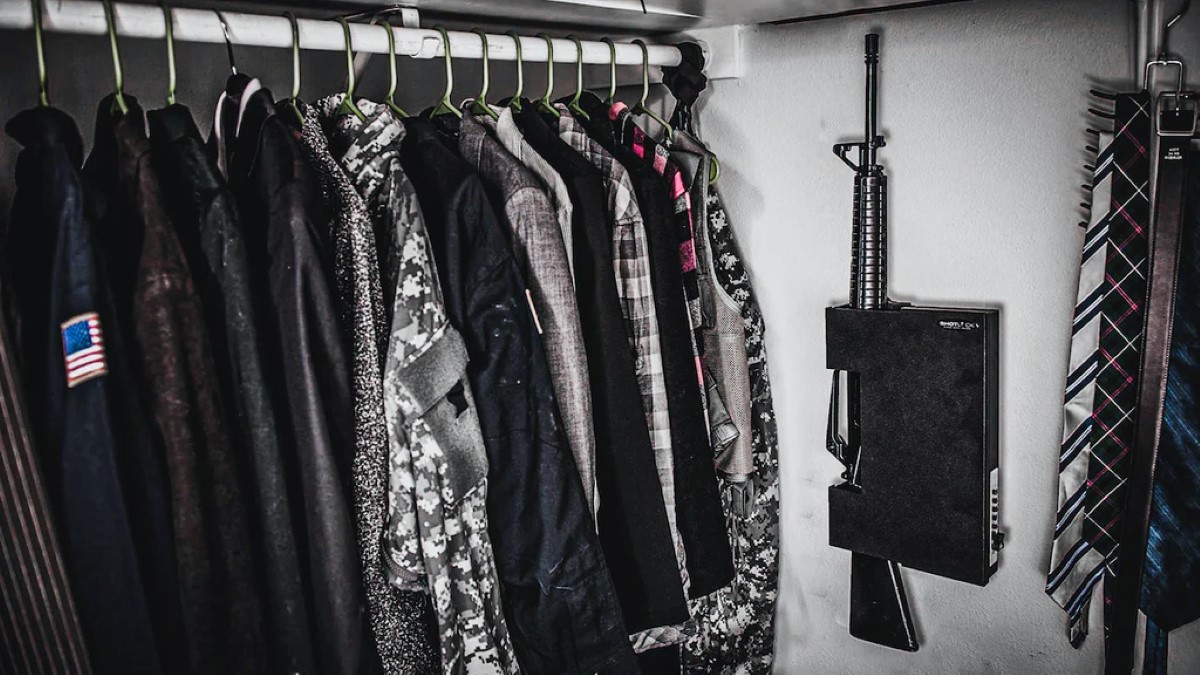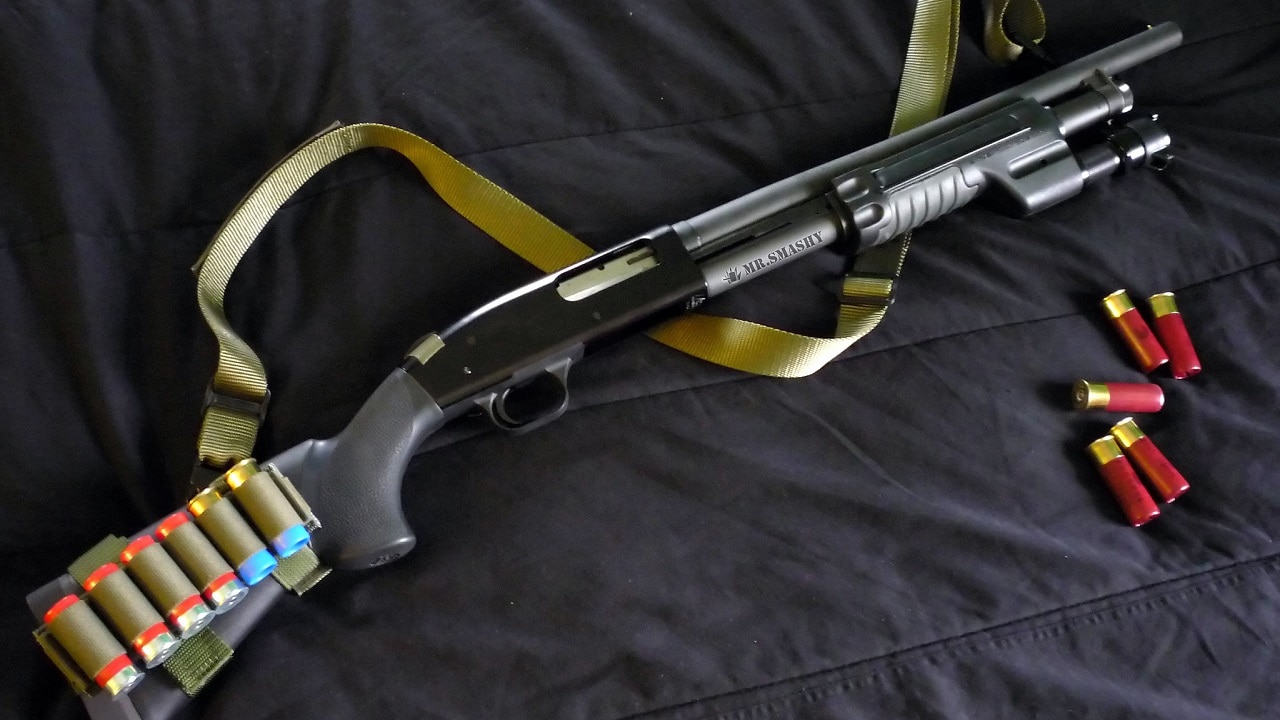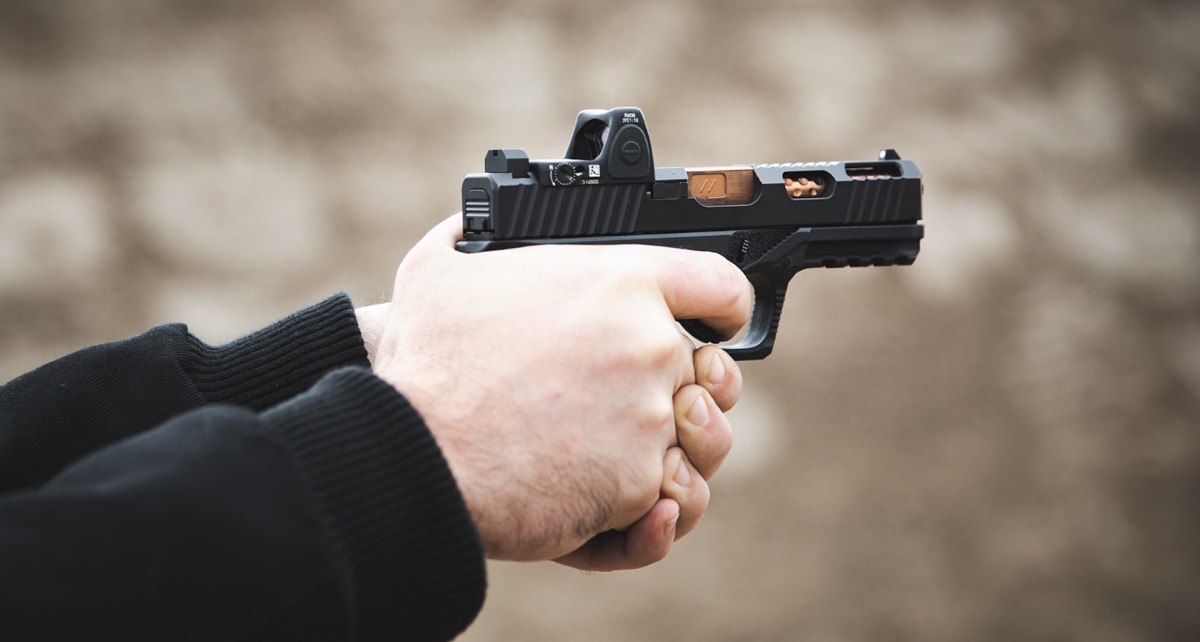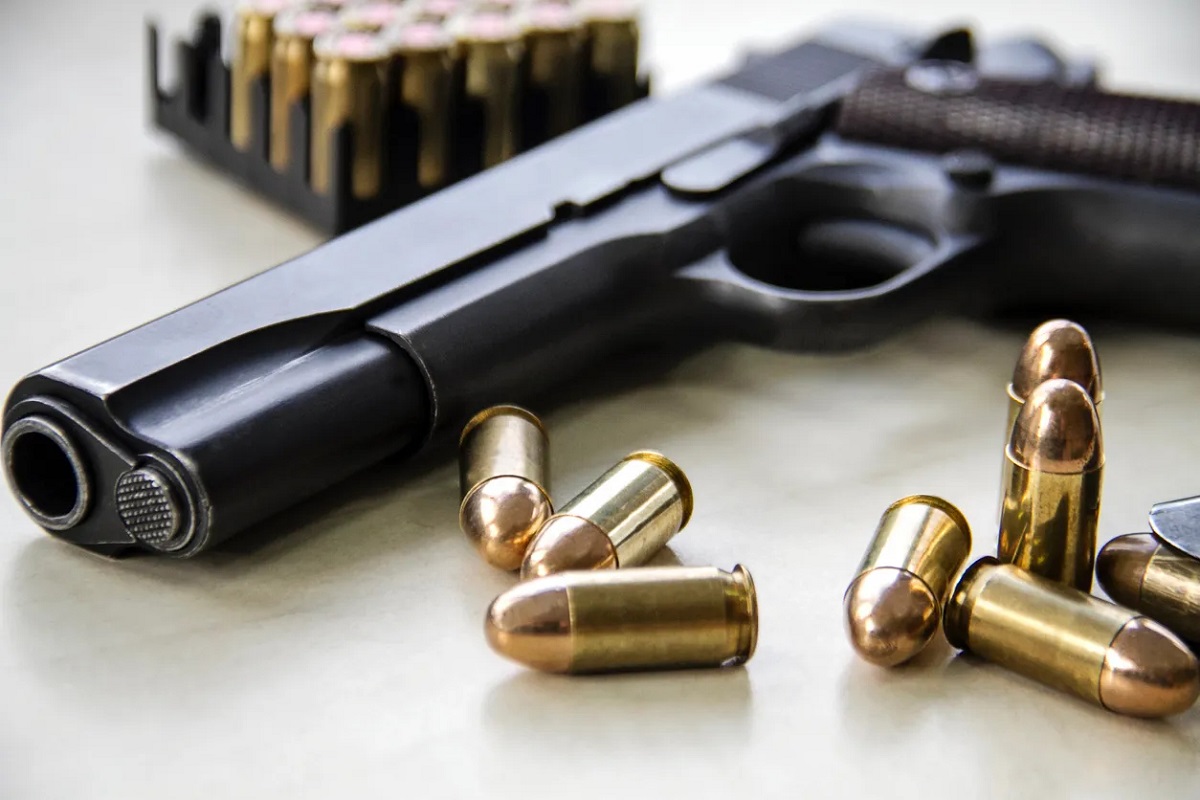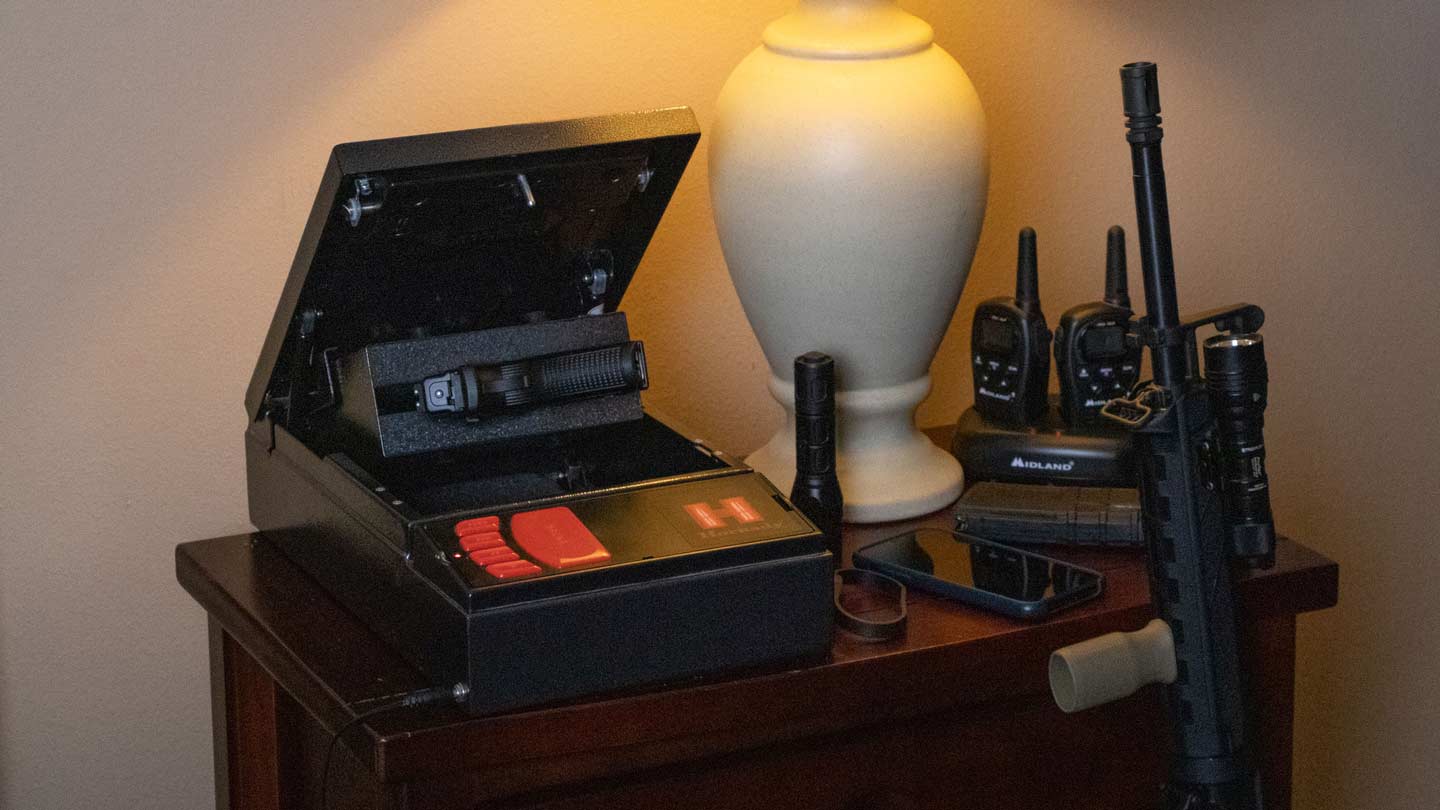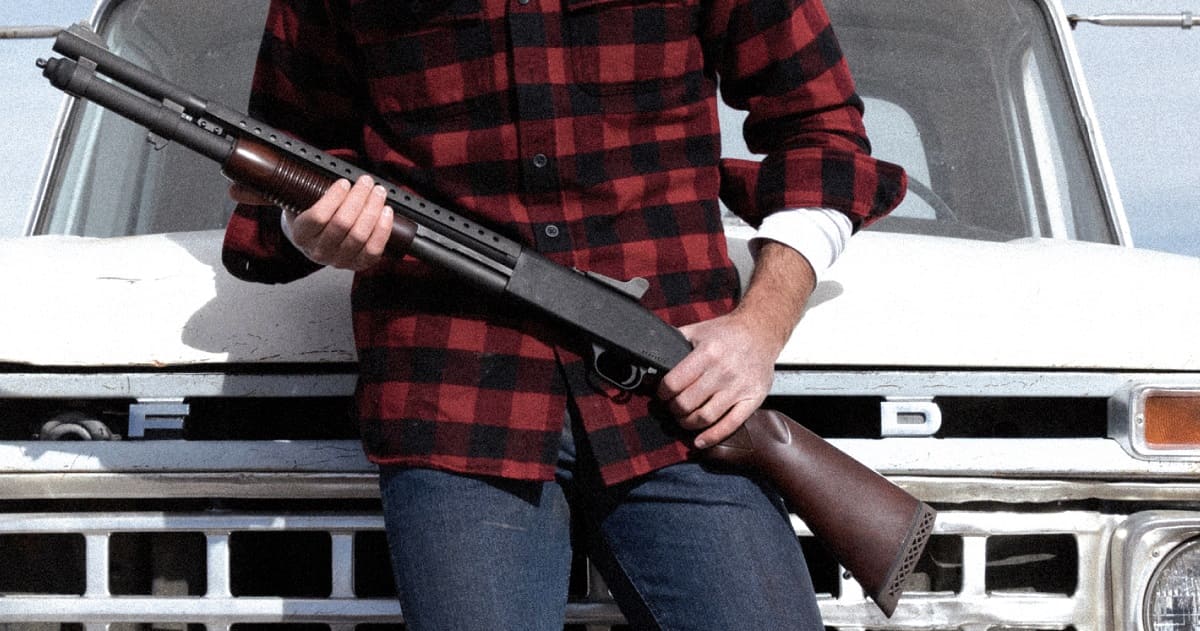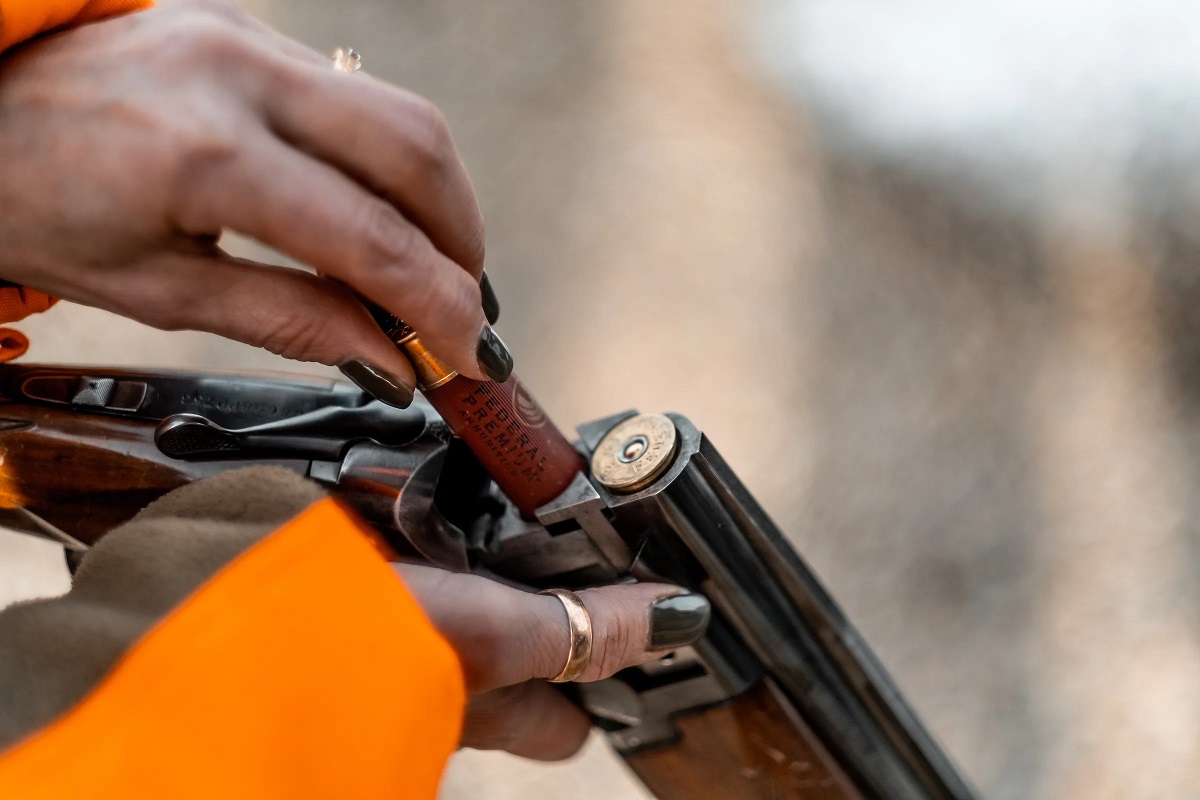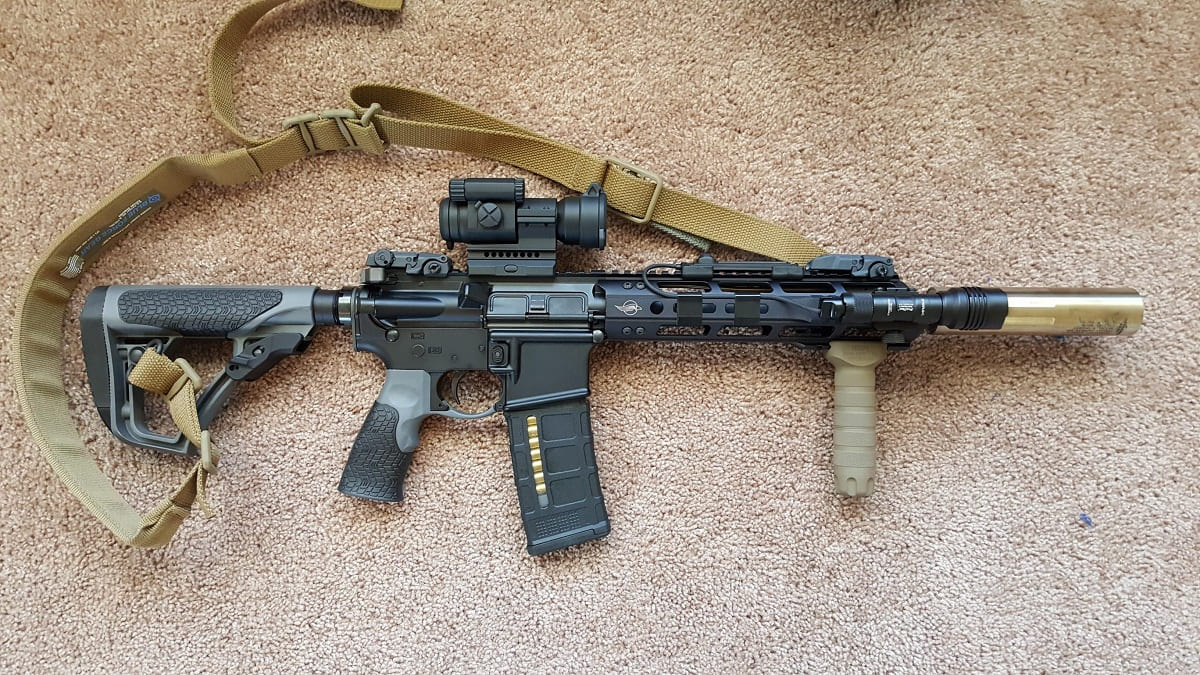Home>Home Security and Surveillance>How Often Are Firearms Used In Home Defense


Home Security and Surveillance
How Often Are Firearms Used In Home Defense
Modified: March 6, 2024
Discover the frequency of firearms use in home defense and learn about the importance of home security and surveillance measures.
(Many of the links in this article redirect to a specific reviewed product. Your purchase of these products through affiliate links helps to generate commission for Storables.com, at no extra cost. Learn more)
Introduction
Home security and surveillance systems play a vital role in safeguarding our homes and protecting our loved ones. With the ever-increasing need for advanced security measures, homeowners often seek ways to enhance their defenses. One popular option that comes to mind is the use of firearms for home defense.
While firearms have always been a contentious topic, it cannot be denied that they have become a prevalent tool for self-defense in many households. The idea of having a firearm within reach in case of an intruder can provide a sense of security and peace of mind for homeowners.
In this article, we will explore the role of firearms in home defense, examine relevant statistics, delve into real-life stories of firearms use, and discuss the critiques and controversies surrounding this controversial topic. Additionally, we will offer alternatives to firearms for those who may be seeking different avenues for protecting their homes.
It is crucial to note that the intention of this article is to provide an informative overview of the topic while maintaining a balanced perspective. We acknowledge that personal beliefs and opinions vary, and it is important to respect everyone’s views on this subject matter.
So, let’s dive in and explore the complex world of firearms in home defense!
Key Takeaways:
- Firearms can provide protection at a distance and act as a deterrent, but come with significant responsibilities and risks. Proper training and secure storage are crucial for safe use.
- Alternatives to firearms for home defense include security systems, reinforced doors/windows, self-defense training, and security dogs. Tailoring a combination of methods to specific needs is key.
Read more: How Often To Clean A Home Defense Shotgun
Understanding the Role of Firearms in Home Defense
When it comes to home defense, firearms have long been considered a powerful tool in deterring and stopping potential threats. The primary purpose of a firearm in this context is to provide a means of self-defense for homeowners and their families when faced with intruders or other dangerous situations.
Firearms offer several advantages when it comes to home defense. First and foremost, they provide a means of protection at a distance. This can be especially useful when dealing with an unknown intruder or when the threat is armed with a weapon of their own. The ability to neutralize a threat from a safe distance can potentially prevent harm and provide valuable time for individuals to call for help or retreat to a safe location.
Another key advantage of firearms is their potential to inflict incapacitating or lethal force, if necessary. In a life-threatening situation, the use of a firearm can be a decisive factor in stopping an aggressor and ensuring the safety of the homeowner and their family. The mere presence of a firearm can also act as a deterrent, potentially discouraging potential intruders from targeting a home in the first place.
However, it is crucial to understand that the decision to use firearms for home defense comes with significant responsibilities. Prioritizing safety and proper training is of paramount importance. Handling a firearm requires a thorough understanding of its operation, proper storage, maintenance, and adherence to local laws and regulations.
It is also essential to consider the potential risks associated with the use of firearms in home defense. Accidental discharge, misplaced shots, and the possibility of escalating violence are potential concerns that should not be taken lightly. Responsible gun ownership includes weighing these risks and taking necessary precautions to minimize the chances of accidents or unintended consequences.
Overall, understanding the role of firearms in home defense means recognizing their potential advantages as well as the responsibilities and risks that come with their use. It is important for individuals considering this option to undergo proper training and education to ensure they are capable of using a firearm safely and effectively, should the need arise.
Statistics on Firearms Use in Home Defense
When discussing the role of firearms in home defense, it is important to back our claims with statistical data. While obtaining accurate and comprehensive statistics on firearms use in home defense can be challenging, there are several studies and sources that provide valuable insights into the subject.
According to a study conducted by the National Crime Victimization Survey, approximately 67,740 victims of violent crime used firearms to defend themselves in 2019 alone. This data suggests that firearms are being utilized by individuals for self-defense purposes in a significant number of cases. However, it is worth noting that these incidents encompass various scenarios, including instances outside of the home.
In a research study published in the Journal of Criminal Law & Criminology, it was found that firearm use in self-defense situations resulted in lower victim injury rates compared to other self-defense methods. The study analyzed various self-defense cases, including those occurring in residential settings. This implies that in some instances, the presence of a firearm can potentially serve as a deterrent or lead to more favorable outcomes when facing a threat.
Further data from the FBI Uniform Crime Reporting (UCR) Program indicates that in instances where an individual used a firearm for self-defense, the overwhelming majority of these encounters did not result in the discharge of the firearm. This implies that the mere presence of a firearm can often be enough to deter or stop an aggressor.
While these statistics may seem promising for proponents of firearms in home defense, it is important to interpret them with caution. It is crucial to understand that statistical data can be subject to biases and limitations. Factors such as the accuracy of reporting, the specific circumstances of the incidents, and the geographical context can influence the interpretation of these statistics.
Additionally, it is worth noting that there are differing opinions among experts when it comes to the interpretation of firearms use in self-defense statistics. Critics argue that the use of firearms can potentially escalate violence or increase the risk of accidental injuries in the home.
Ultimately, while statistics can provide insights into the prevalence of firearms use in home defense, it is important to consider them as part of a larger conversation. Personal circumstances, individual training, and local laws and regulations should also be taken into account when making decisions regarding home defense strategies.
Real-Life Stories of Firearms Use in Home Defense
Real-life stories can provide valuable insight into the effectiveness of firearms as a means of home defense. While each case is unique and should be evaluated on its own merits, examining these stories can offer a glimpse into the potential scenarios where firearms have been successfully used for self-defense.
One such story involves a homeowner who woke up in the middle of the night to the sound of glass breaking downstairs. Knowing that someone had broken into their home, the homeowner retrieved their legally-owned firearm and cautiously approached the source of the noise. When they encountered the intruder, they were able to defend themselves and their family until help arrived. In this case, the presence of a firearm served as a key factor in neutralizing the threat and ensuring the safety of the occupants.
In another instance, a family living in a rural area faced a dangerous situation when a group of armed individuals attempted to forcefully enter their property. The homeowner, who had undergone extensive firearms training, used their firearm to deter the intruders, preventing them from entering their home and protecting their family. The quick response and proper use of the firearm in this case were instrumental in ensuring the safety and well-being of the occupants.
These stories, while anecdotal, highlight situations where homeowners effectively used firearms to defend themselves and their loved ones. However, it is essential to note that every self-defense situation is unique, and outcomes can vary depending on a multitude of factors, including the individual’s training, circumstances surrounding the incident, and the actions of the intruder.
It is also important to acknowledge that not all real-life stories involving firearms in home defense have positive outcomes. There have been cases where firearms were mishandled or resulted in unintended consequences, leading to injury or loss of life. These incidents serve as a reminder that responsible firearm ownership, proper training, and adherence to safety protocols are crucial in maximizing the potential benefits of using firearms for self-defense.
Real-life stories can offer valuable insights into the complex dynamics of firearms use in home defense. They remind us of the importance of being prepared, making informed decisions, and prioritizing safety when considering firearm ownership for self-defense purposes.
Critiques and Controversies Surrounding Firearms Use in Home Defense
The use of firearms for home defense is not without its critics and controversies. While some argue that firearms can provide effective protection, others raise valid concerns regarding their use. It is important to examine these critiques and controversies to understand the broader discussion surrounding firearms in home defense.
One common critique revolves around the potential for accidental injury or misuse of firearms. Accidental discharge of a firearm can result in unintended injuries, especially in high-stress situations. Additionally, the presence of a firearm in the home can pose risks, particularly when there are children present. Critics argue that the availability of firearms increases the likelihood of accidents and unauthorized access, making gun ownership potentially more dangerous than beneficial.
Another controversy surrounding firearms in home defense is the potential for escalation. Critics argue that the use of firearms can lead to an escalation of violence that may not have otherwise occurred. In certain situations, the mere presence of a firearm can escalate a confrontation, potentially endangering both the homeowner and the intruder. There is a concern that the use of firearms could potentially turn a non-lethal encounter into a deadly one, with serious consequences for all parties involved.
Furthermore, critics also question the efficacy of firearms as a means of home defense in real-world scenarios. They argue that the assumption of being able to accurately and effectively use a firearm in a high-stress situation is unrealistic for most individuals. They contend that in a panic-induced situation, the chances of accurately neutralizing a threat with a firearm may be low, potentially leading to unintended consequences and putting oneself and others at further risk.
Additionally, critics raise concerns regarding the mental and emotional toll of using firearms for self-defense. They argue that the psychological aftermath of a self-defense shooting can be significant, potentially leading to long-lasting trauma for the homeowner. Furthermore, the responsibility of taking a life, even in self-defense, is a heavy burden that should not be underestimated.
It is important to acknowledge that these critiques and controversies surrounding firearms use in home defense are not unfounded. They prompt discussions on responsible gun ownership, training, and the need for comprehensive safety measures to minimize the potential risks associated with firearms.
In weighing the pros and cons of firearms in home defense, it is essential for individuals to consider their own capabilities, level of training, and the specific circumstances in which they reside. Exploring alternative home defense strategies and seeking expert guidance in assessing personal security needs can provide valuable insights for those who are hesitant or unsure about relying solely on firearms.
Ultimately, the controversies and critiques surrounding firearms use in home defense serve as a reminder of the complex nature of this issue. It is crucial to approach these discussions with an open mind, considering all perspectives, and prioritize the safety of oneself, family, and the community at large.
Alternatives to Firearms for Home Defense
While firearms are often considered a popular option for home defense, they are not the only solution available. For various reasons, some individuals may choose to explore alternative methods to protect their homes and loved ones. Here are some alternatives to consider:
1. Home Security Systems
Investing in a comprehensive home security system can significantly enhance your home’s defense. These systems usually include features such as motion detectors, security cameras, door/window sensors, and alarm systems. When properly installed and monitored, home security systems can serve as a deterrent and provide timely alerts for potential intrusions, allowing you to take appropriate action or notify authorities.
2. Security Doors and Reinforced Windows
Upgrading your doors and windows can provide an added layer of security. Consider installing solid core or metal security doors with reinforced frames and high-quality deadbolt locks. Additionally, reinforcing windows with shatter-resistant films or installing security bars can make it more difficult for intruders to gain entry, giving you valuable time to react or seek help.
3. Outdoor Lighting and Landscaping
Well-placed outdoor lighting can deter potential intruders by eliminating dark areas around your property. Motion-activated lights near entrances and vulnerable areas can be particularly effective. Additionally, maintaining landscape elements such as trimmed hedges and clear sightlines can minimize potential hiding spots for intruders, increasing overall visibility and discouraging unauthorized access.
Read more: What To Use For Home Defense
4. Safe Rooms
A safe room is a secure designated area within your home where you can retreat in the event of an intruder or emergency. Consider reinforcing a room with solid doors, heavy-duty locks, and communication devices to use as a safe space during a threat. Stock the room with necessary supplies, such as food, water, and a first-aid kit, to ensure your comfort and safety during an extended stay.
5. Self-Defense Training
Enrolling in self-defense classes can equip you with valuable skills to protect yourself and your loved ones. These classes typically teach techniques to neutralize threats without the need for firearms. Learning martial arts, basic strikes, and situational awareness can bolster your ability to defend yourself in various situations, giving you confidence and peace of mind.
6. Security Dogs
A well-trained security dog can act as a deterrent and provide an early warning system. Dogs are known for their loyalty and protective instincts, making them an excellent addition to your home security. Breeds that are known for their guard dog capabilities, such as German Shepherds or Doberman Pinschers, can be trained to respond to potential threats and provide an added layer of protection.
It is important to evaluate your specific needs and assess the advantages and limitations of each alternative. Often, a combination of methods tailored to your circumstances will provide the most effective home defense strategy.
Remember, regardless of the methods chosen, periodic evaluation and maintenance of your security measures are essential to ensure their continued effectiveness. Regularly assess your home’s vulnerabilities, update security protocols, and stay informed about emerging technologies and best practices in home defense.
By implementing alternative home defense strategies, you can enhance the security of your home and protect your loved ones, providing peace of mind without solely relying on firearms.
Conclusion
Home security and the protection of our loved ones is a paramount concern for homeowners. The decision to use firearms for home defense is a deeply personal one that should be approached with careful consideration, education, and responsibility.
Throughout this article, we have explored the role of firearms in home defense, examined relevant statistics, delved into real-life stories, discussed critiques and controversies, and offered alternatives to firearms. It is clear that the use of firearms for self-defense is a topic that elicits strong opinions and emotions from various perspectives.
While firearms can provide a means of protection at a distance and potentially neutralize a threat, they also come with significant responsibilities and potential risks. Accidental injuries, potential escalation of violence, and psychological aftermath are concerns that must be thoroughly addressed and minimized through proper training, secure storage, and adherence to safety protocols.
It is important to recognize that firearms are not the only solution for home defense. Alternatives such as comprehensive home security systems, reinforced doors and windows, outdoor lighting, self-defense training, and even security dogs can provide effective layers of protection. The key is to tailor your home defense strategy to your specific needs and circumstances, considering a combination of methods that complement one another.
Ultimately, whether you choose to rely on firearms or explore alternative methods, responsible decision-making and a commitment to safety should always be at the forefront. Regular evaluation of your security measures, ongoing training, and staying informed about emerging technologies and best practices are essential to ensure the effectiveness of your home defense strategy.
We hope this article has provided you with valuable insights into the complex discussions surrounding firearms in home defense. Remember, every individual and every home is unique, and what works for one person may not necessarily work for another. It is crucial to assess your own comfort level, capabilities, and local laws and regulations when making decisions regarding home defense.
Ultimately, creating a safe and secure environment requires a holistic approach that prioritizes the wellbeing of yourself, your loved ones, and your community. By being informed, thoughtful, and proactive, you can take the necessary steps to protect your home and provide peace of mind for those within it.
Frequently Asked Questions about How Often Are Firearms Used In Home Defense
Was this page helpful?
At Storables.com, we guarantee accurate and reliable information. Our content, validated by Expert Board Contributors, is crafted following stringent Editorial Policies. We're committed to providing you with well-researched, expert-backed insights for all your informational needs.

